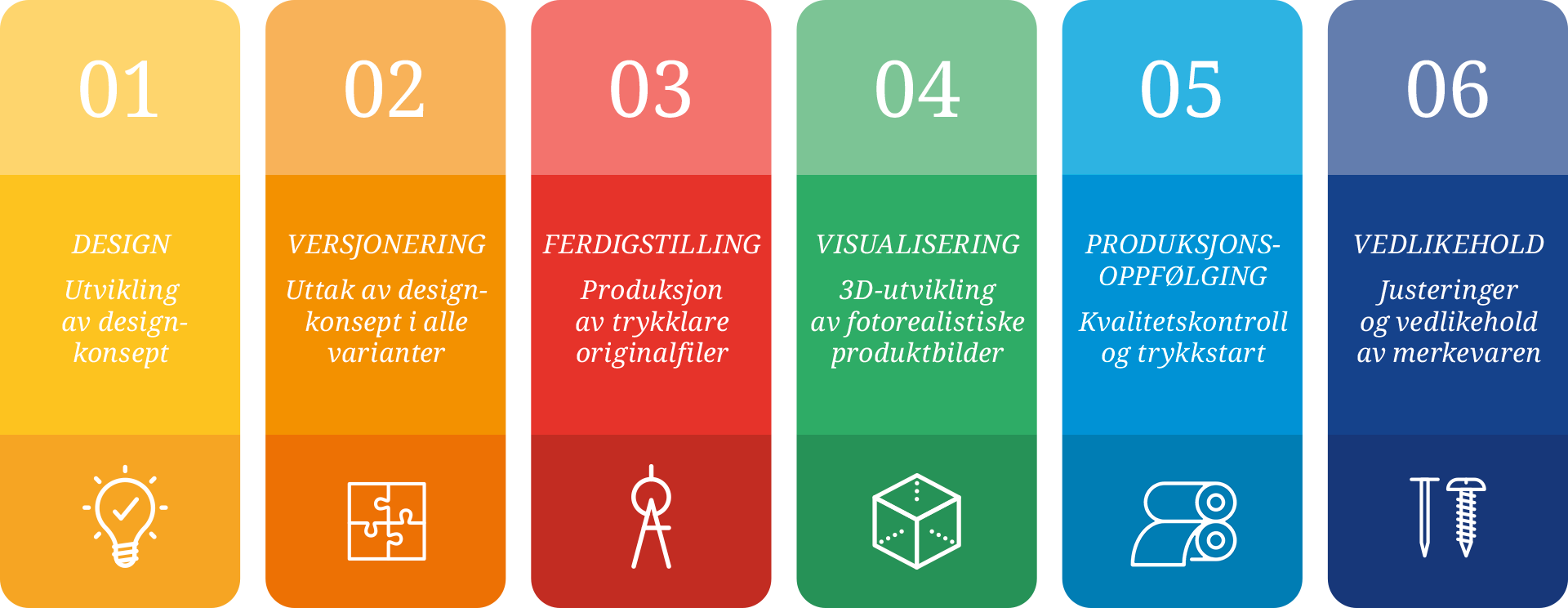|
Oblivion Design has extensive experience in structuring and streamlining resource-intensive design processes without compromising on quality.
|
We have divided the production flow into six phases so it is easier to assess the need for each individual project. All projects vary in scope and complexity, which is why we have facilitated the greatest possible flexibility.
|
Process descriptions
1. DesignExisting basic elements are retrieved from the design agency or own archive, and new elements are developed when needed together with the customer and in accordance with existing design guidelines. Line expansions and small changes are made quickly and efficiently as a natural part of production, while more comprehensive redesign and further development of brands is developed as a separate process adapted to the brand's needs and level of ambition. |
2. VersioningAfter the design basis has been approved, all the product variants that may be needed are developed. This can involve variables such as different tastes, different volumes and language variations. We have extensive experience in interpreting and continuing design within a given expression, and often it is far more efficient to do this in the production phase rather than spending a lot of time on repetitive work in an otherwise busy design process. |
3. ArtworkWhen all versions of a product have been designed and approved, we post the final production files in close dialogue with the printing company. We always check that we work with updated printing technical information, something we need to optimize the design, text and images for the current production technique. We have good knowledge and experience from all relevant printing techniques such as offset, flexographic printing, gravure printing, letterpress printing and screen printing, and can optimize for this. |
4. VisualisationWhen the design is ready for printing, we can develop photorealistic product images for use in sales and marketing materials. In this way, the customer can start the process of presentations, and convey product images well in advance of the product being finished. If changes are made to the design or selection later, it is a small matter to update the existing 3D images with a new design without the need for new hours in a photo studio. |
|
EFFICIENT PROCESS
|
FLEXIBILITY
|

